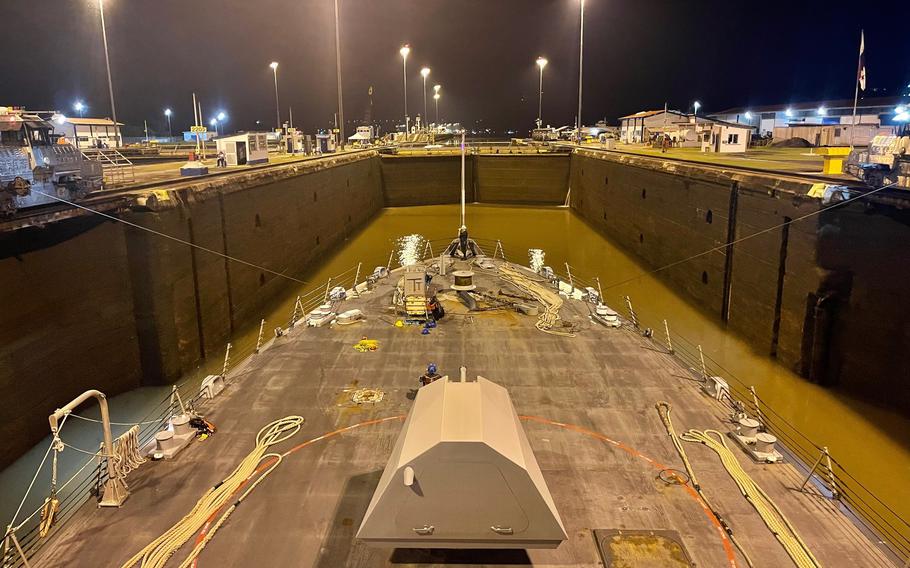
The littoral combat ship USS Billings passes through the Panama Canal in September 2022. The Panama Canal Authority released a statement Feb. 5, 2025, contradicting a State Department announcement that the authority had agreed to waive fees for U.S. government vessels transiting the canal. (Justin Hovarter/U.S. Navy)
U.S. Navy ships transiting the Panama Canal aren’t entitled to a free ride just yet despite the State Department’s announcement this week saying they would transit the waterway without paying fees, according to the canal’s governing authority.
The Panama Canal Authority said Wednesday on an official social media account that it had not made any adjustments to the tolls or fees charged for canal use.
The authority also emphasized its sovereign governance of the passageway connecting the Atlantic and Pacific oceans.
The post on X, formerly Twitter, did express a willingness “to establish a dialogue with the relevant officials of the United States regarding the transit of warships from said country.”
The communication followed a State Department announcement the same day saying an agreement had been reached with Panama to allow U.S. government vessels free passage through the canal.
“This saves the U.S. government millions of dollars a year,” the State Department said on X.
The dueling messages followed Secretary of State Marco Rubio’s visit to Panama on Sunday and Monday, during which he met with Panamanian President Jose Raul Mulino and toured the canal, among other activities.
During Rubio’s visit, both governments agreed to study the feasibility of giving U.S. warships free passage, The Wall Street Journal reported on Thursday.
Navy use of the canal is infrequent, with about 40 vessels transiting annually, excluding the service’s aircraft carriers, which are too large. Allowing free access would reportedly save the U.S. about $13 million each year, according to the WSJ report.
Ships pay an average of about $750,000 per crossing, but tolls can range from $300,000 to $1 million, the newspaper said.
Waiving the fees for Navy ships would require Panama to find a way around the Neutrality Treaty signed in September 1977, which bars preferential treatment among nations and calls for “equal conditions of charges or transit.”
Rubio also delivered a strong warning to Mulino that Panama must reduce Chinese influence over the canal area or face potential retaliation from the U.S., The Associated Press reported Sunday.
A Hong Kong-based company has operated two ports at either end of the canal since 1997.
In 2024, there were at least 9,944 transits across the canal, which serves about 170 countries, according to information on the authority’s website.
U.S. President Donald Trump has threatened to take over the canal, citing what he said is undue influence from China and exorbitant fees charged to American shippers and the Navy. Panamanian officials have denied Trump’s claims.
Under a treaty signed in 1904, Panama gave the U.S. the rights to build and operate the canal and control 5 miles of land on either side of the waterway.
The first ship transited the canal in 1914, and the U.S. unilaterally operated the waterway for decades until agreeing in the Panama Canal Treaty, also signed in September 1977, to gradually relinquished authority, according to the State Department.
Panama gained full control of it in December 1999.